Like many photographers, I’ve always aspired to become a photojournalist. However, the global media industry is rapidly changing and the ‘golden era’ of photojournalism – featuring the globe-trotting likes of Sir Don McCullin and James Nachtwey – is in decline.
Yet I’ve been fortunate enough to develop a side hustle writing and photographing feature articles for publications such as Al Jazeera, SBS, The Guardian and others.
Recently I covered a story for Al Jazeera about the ongoing human rights issue of refugees and asylum seekers in Australia. Over the past 15 years, the Australian Government has developed a very strict immigration policy, which ensures that anyone seeking asylum and arriving by boat will never be permanently settled here.
Not content with this policy – which is a direct contravention of the 1951 UN Refugee Convention, to which Australia is a signatory – anyone arriving by boat has been locked up in offshore detention centres in far flung islands such as Manus and Nauru.
There, refugees and asylum seekers are confined in horrendous conditions in what can only be described as prison camps, often for years at a time in legal limbo awaiting an outcome of their refugee application status. In 2019 a group of men needing medical treatment were transferred to the Australian mainland, and have subsequently been confined to hotel rooms for the last 18 months in a state of permanent lockdown.
I managed to interview one refugee – Farhad Bandesh – who finally was released about his experience, and to add to the article, I photographed a protest that occurred outside one of the prison hotels in Melbourne city.
I had assumed the protest would be relatively peaceful affair, but as has been occurring in Australia recently, a large contingent of police attended in what turned out to be a violent attempt to shut the protest down, which I was able to capture.
While most photojournalists use long-range zooms with all the benefits that digital technology offers – super fast autofocus and multiple burst shots – I seem to be stuck in a previous era.
As I usually shoot film, my preferred method of photography is to use fixed manual lenses and I have carried this process over to digital.
For this shoot, I was using a Sony A7 with a fixed 35mm Carl Zeiss manual lens attached by way of an adaptor, and simply had the camera set to aperture priority mode.
I am not inherently ‘against’ digital technology (and in many cases wind up regretting my outdated approach) I personally find the fixed, manual lens forces me to get closer to the action and compose the photo with a bit more forethought.
My other rationale for using this approach is so that I remain in the habit of shooting in an analogue style, so when I transfer back to film I haven’t lost my technique.
While I am in no means an expert photojournalist, here is a selection of photos that I shot on that day which gives some insight into the way I went about covering the protest.
The image at the top was taken as the protest started peacefully. It was an evening event, the light was on my side. I like this photo as it is clear there is some kind of injustice happening with the raised fist, outlined by the sky. The mask also signifies the Covid restrictions that were in place.
This next image is really just a generic photo that demonstrates what the protest is about – nothing that special, but a solid photo to submit to an editor.
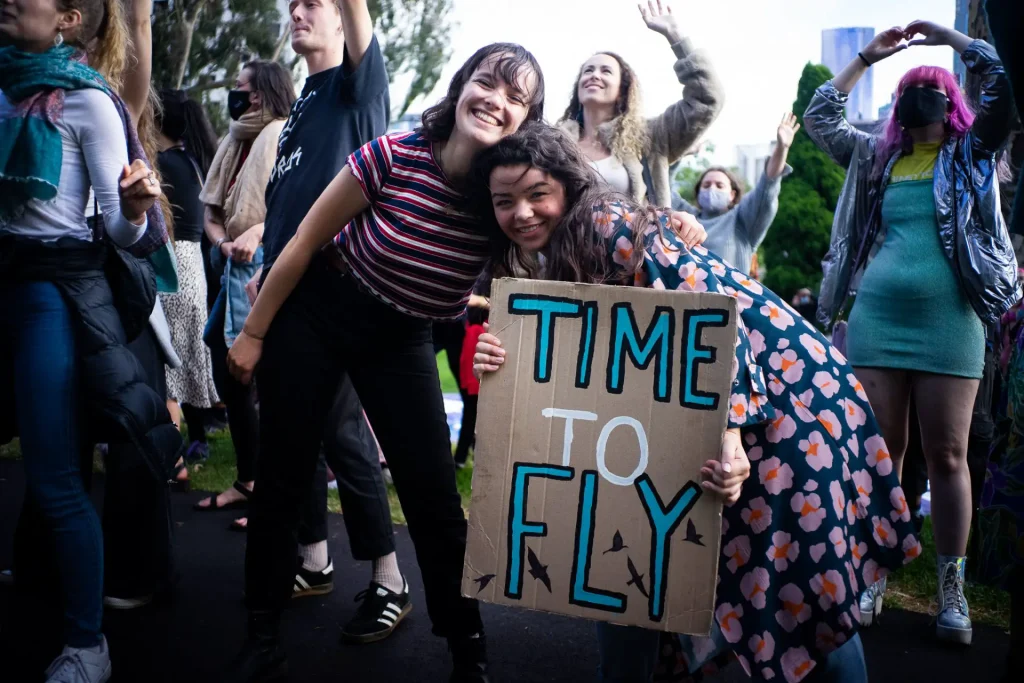
At one point, a light rain began, and protesters started dancing to the music that was playing, as the protest featured hip hop artists and DJs. Although probably not a very clear photo for publication, I still like this one for the dynamic between the obvious police presence and the positive aspect of the protestors dancing in the rain.
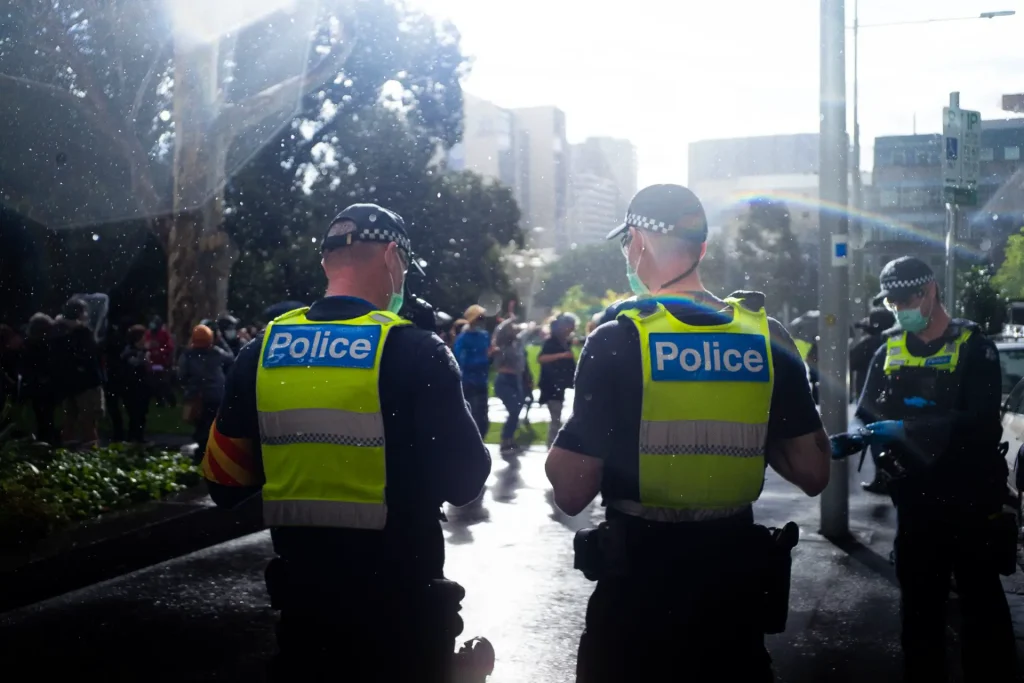
The police then decided to try to confiscate the sound system and shut down the protest, and a tense standoff began. Being a fixed lens camera, in order to get this shot I had to position myself right between the line of police and the resisting protesters.
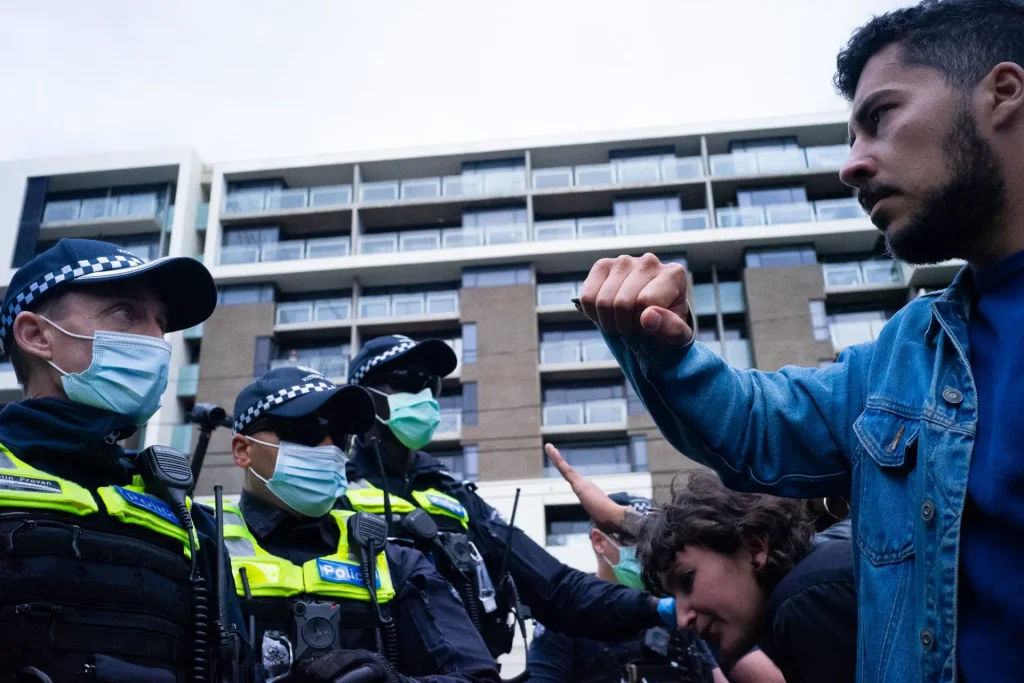
The police then threatened the use of capsicum spray, and while this photo didn’t turn out exactly how I wanted, my aim was to try and capture a dramatic ‘front line’ type of photo. It was at this point I realised if they triggered the capsicum spray I would be in the direct line of fire!
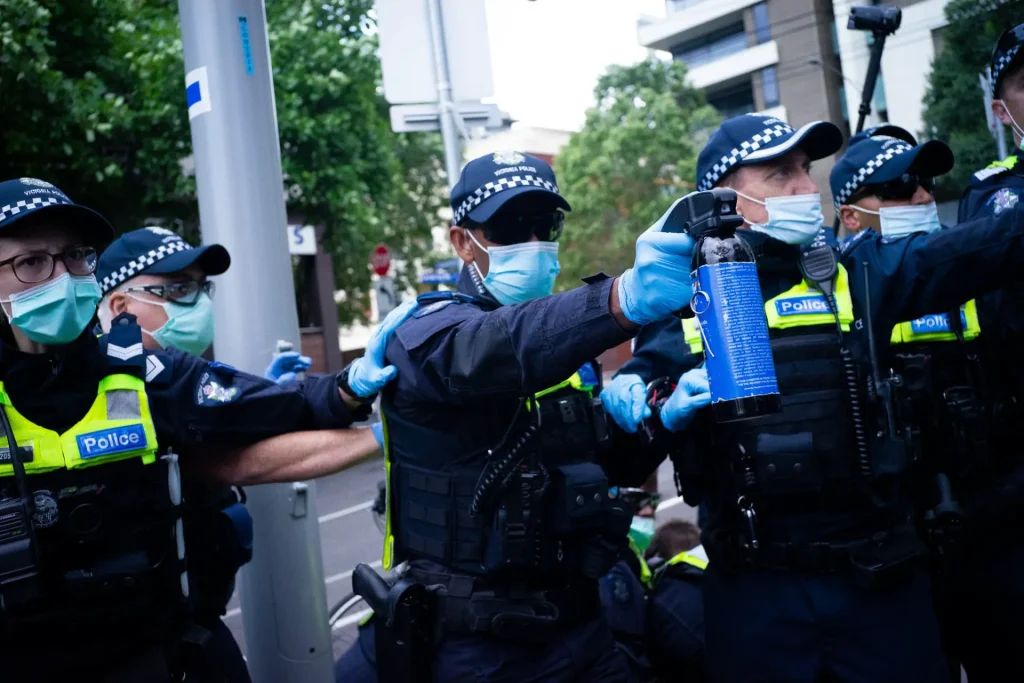
The police then moved in very heavy handedly, and luckily I was in the right position to capture what was happening. I always find that when shooting events or protests, there is a lot of waiting around but that is also the time to find the right position to be ready if any action is about to happen.
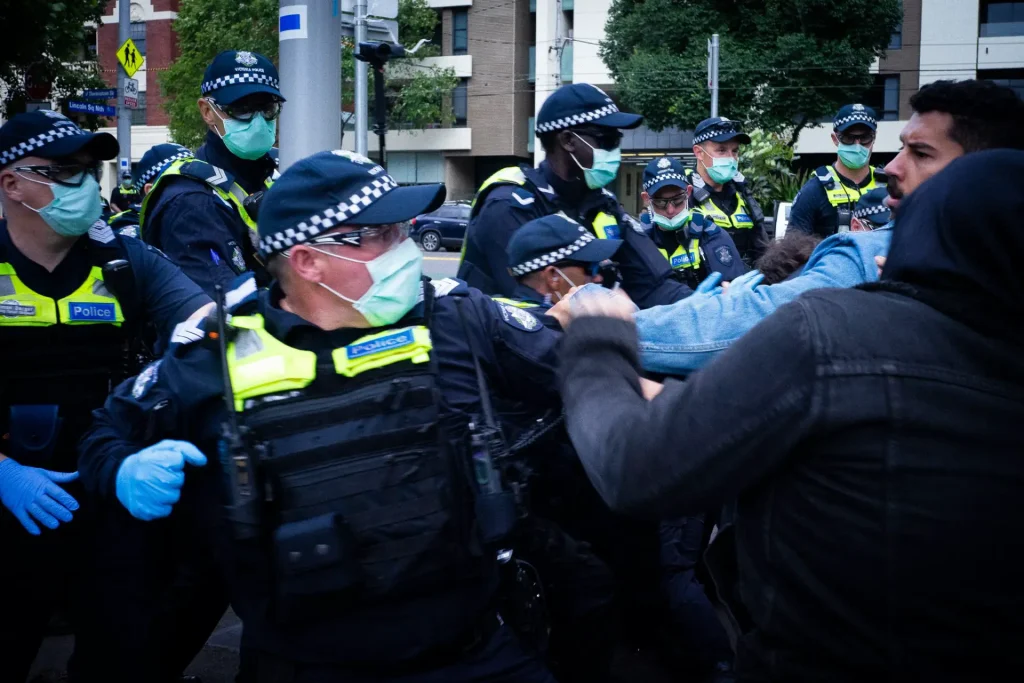
After two attempts to shut down the sound system – which the protestors resisted – the music continued. This shot is of Melbourne rapper Mr Monk and I like how the raised fist mirrors the sky scrapers of Melbourne’s city skyline in the background – the solidity of the buildings mirrors the strength shown by the protesters standing their ground.
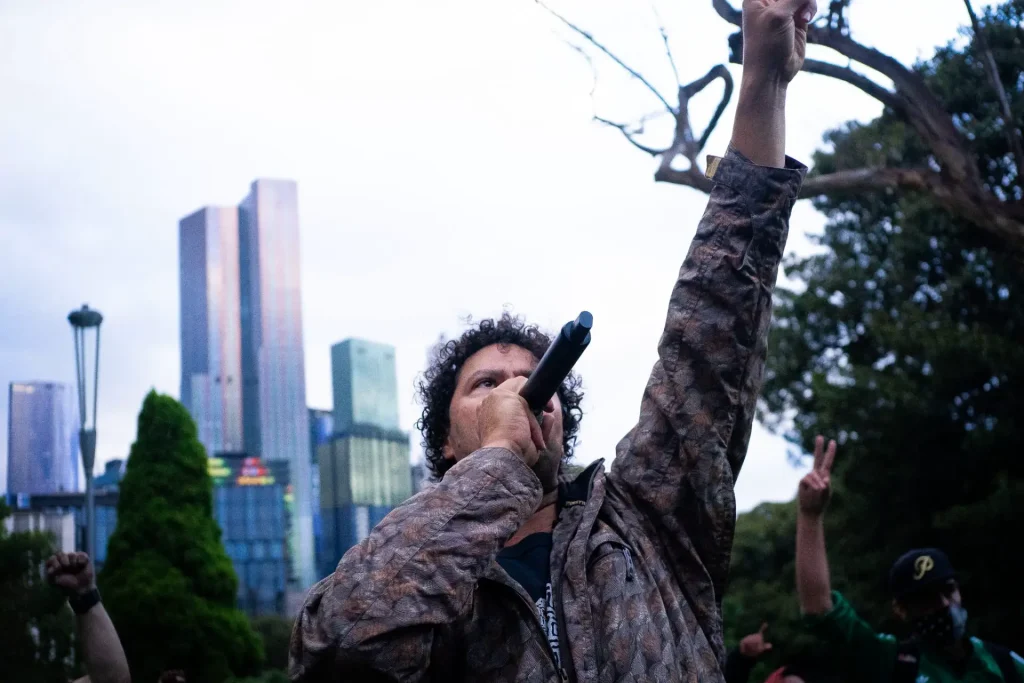
This last photo is one of my favourites. The protestors were all looking up to the third floor of the hotel where the refugees are located, and the range of emotions in this young woman’s face conjures up the passion she feels for this human rights issue. Again, I am very close to the subject to the point it is a little out of focus due to the minimum range of the lens, but I find that my favourite photos convey emotion rather than having to be super sharp or technically perfect.
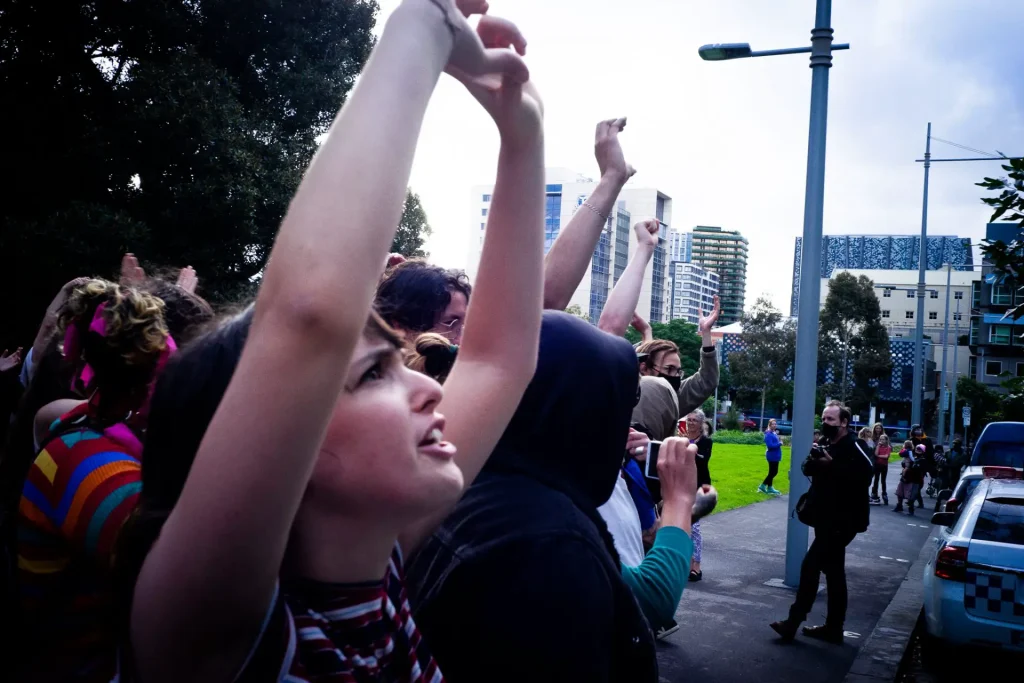
While the days of (mostly white, male) photojournalists being flown around the world to cover dramatic stories of starvation and war may be all but over, I believe there are always events and issues that can be covered in our own backyard.
And with some solid photography and a genuine passion and interest in the story, there is always a newsworthy subject to go out and shoot.
Thank you for reading – I hope you have enjoyed this brief insight into my experience of photojournalism – you can read the full article that was published in Al Jazeera here.
You can also listen to the full interview with refugee Farhad Bandesh on my Youtube Channel and also follow me on Instagram @alimcphotos
Share this post:









Comments
Terry B on Photographing a Refugee Protest – By Ali MC
Comment posted: 18/03/2021
Comment posted: 18/03/2021
Comment posted: 18/03/2021
Nick Lyle on Photographing a Refugee Protest – By Ali MC
Comment posted: 18/03/2021
Comment posted: 18/03/2021
Ralph Turner on Photographing a Refugee Protest – By Ali MC
Comment posted: 18/03/2021
Comment posted: 18/03/2021
Ralph Turner on Photographing a Refugee Protest – By Ali MC
Comment posted: 19/03/2021
WillimB on Photographing a Refugee Protest – By Ali MC
Comment posted: 20/03/2021
Ali MC on Photographing a Refugee Protest – By Ali MC
Comment posted: 20/03/2021
Thanks for the comment and positive note about the photos. With regard to the comments more broadly about objective journalism are you referring to this article as penned for 35mmC or the actual article that appeared in Al Jazeera? If the former, no of course this isn't a journalistic piece, it just a blog article I wrote about a small aspect of my freelance work. If you are referring to the actual Al Jazeera article, you would have read statements from the Ministry of Home Affairs, whom I contacted with an array of questions to present 'the other side's view'. If you have not read that article, you can find it here: https://www.aljazeera.com/news/2021/1/22/medically-vulnerable-refugees-in-australia-hotels-finally-freed
The more overarching question is also, has journalism or journalistic photography ever been objective?
Ali